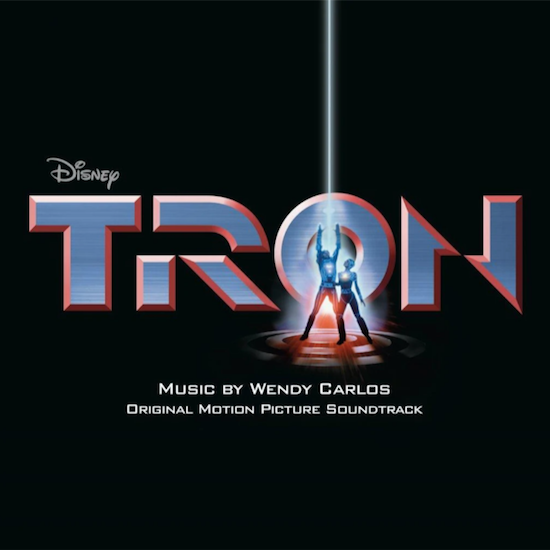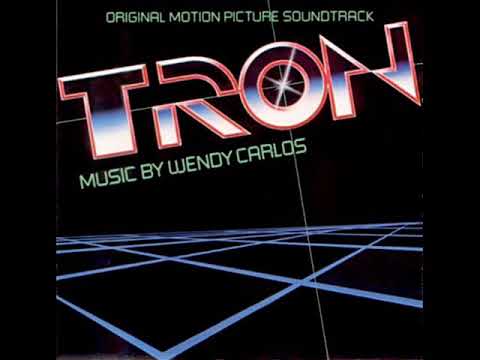"Up until that moment, electronic music had this promise of a different vocabulary, a different language, a new paradigm, a new way of working. Switched-On Bach, the way it impacted the public’s consciousness of what a synthesiser was… was completely retroactive."
This claim was made by electronic musician Suzanne Ciani in the 2020 documentary Sisters With Transistors, during the meagre portion set aside to cover pioneering electronic musician Wendy Carlos. Not even considering the visual misgendering the film indulged in, the coverage looked like an attempt to leave her legacy undermined. But Carlos’ relationship with the media has been turbulent for a long time, the most egregious example being an invasive Playboy interview that zeroed in remorselessly on her gender transition at the expense of talking about her music. But Ciani’s quote was a surprisingly blatant slap in the face during a documentary supposedly dedicated to uplifting the various female creatives that had otherwise been omitted from the official narrative.
As retroactive as her music supposedly was, Carlos was instrumental to not only the popularisation of the synth, but its construction, too. It was the release of Switched-On Bach that exposed mainstream audiences to the possibilities of the synthesiser as an instrument. It was Carlos who advised Robert Moog on the refinement of his novel instrument, the Moog Synthesizer, the first commercially available synthesiser and the blueprint for most that would follow. Without Carlos, the synthesiser simply would not exist in the same way it does today.
For all the critical acclaim, it’s notoriously difficult to find digital copies of most of Carlos’ work – that is, except for her soundtracks. This week is the anniversary of the Tron soundtrack, which Carlos composed in 1982. Tron is routinely overshadowed by her work on two other major soundtracks, Stanley Kubrick’s A Clockwork Orange and The Shining.
A Clockwork Orange became famous for its eerie Beethoven performances, along with the first recorded use of the vocoder for singing. Meanwhile, The Shining became acclaimed for its use of chilling pieces by Penderecki and Bartok – but as on its predecessor, Carlos was given little room to actually compose. Her working relationship with Kubrick came to a close when Carlos and producer Rachel Elkind slaved away for two years on the score for The Shining, only for three measly cues to be used by Kubrick in the final cut.
Tron therefore stands as Carlos’ fullest cinematic vision out of the trio of soundtracks. It’s also the kind of soundtrack that benefits from solo listening, having been mixed rather quietly in the film. But more importantly, Tron, is more than a superficial artefact of ‘80s aesthetics; it’s a vital chapter in the development of the synthesiser unfolding right before your ears. That chapter could only have been written by someone like Wendy Carlos.
The types of synthesisers you’ll hear in Tron significantly impacted how Carlos wrote the score. We must remember that Carlos had graduated from Columbia University with a degree in physics and maths; she spoke the language of science fluently, and it helped her understand the limitations, as well as the capabilities, of the synthesiser.
Two synthesisers are used throughout Tron; the analog Moog Modular, for the ‘fat’, occasionally ‘chorus-like’ sounds, and the GDS (General Development System). Figures vary across sources, but only five to ten models were ever manufactured and sold by Crumar. Carlos was one of those proud owners.
The GDS wasn’t supposed to be a synthesiser, really. The concept of digital signal processing was tested in Bell Labs for communication purposes, and later licensed to Crumar, who applied it to create digital synthesisers. But the GDS would pave the way for the Synergy synth, which Carlos would use extensively in her later albums, Digital Soundscapes and Beauty In The Beast.
What did Carlos see in the GDS? Its hybrid use of FM and additive synthesis allowed for a greater degree of emotional expression and sound design than other synths at the time (and this was before the eventual reign of the Yamaha GX-1). And unlike the painstaking work undertaken on Switched-On, in which notes and chords were recorded note-by-note, the GDS was a velocity-sensitive keyboard perfect for performance.
Indeed, one of the things that strikes me when listening to the soundtrack is that it’s difficult to separate the orchestral and the synthetic. This was completely intended by Carlos, who wanted to bridge these two worlds and make them "totally without seams". It’s not a case of simply mimicking the acoustic; rather the Tron soundtrack carefully toes the line between human and the inhuman to purposely unsettle the audience with uncanniness. Think of the thrilling ‘Wormhole’, whose sustained moans could be interpreted either as comforting, brassy calls, or the alien drone of the synthesiser. This was only possible with the precise engineering of the GDS and Carlos’ rigorous intellect in understanding how to push it.
Another success of Carlos’ work on Tron is to envision a space for the synthesiser where it didn’t previously exist – the orchestra. When Disney approached Carlos to score Tron, sound supervisor Michael Fremer had initially suggested restricting the synthesiser to the computer world, using more organic orchestration during the ‘real’ scenes in order to create contrast. Carlos, however, wanted a chance to flex her compositional muscles, and asked to blend the two together. She had, after all, pursued an MA in composition at Columbia University. (This was much to the surprise of Disney, and to Carlos’ chagrin: "What do you think my training is?")
To understand the inner workings of an instrument is one thing; understanding how to use it requires totally different instincts. In Tron, Carlos pulled from the concerto tradition in order to integrate the synth. In principle, the concerto is typically designed for a soloist with an accompanying orchestra; Carlos envisioned the synthesiser as filling the role of an organ, where it could comfortably switch between playing central melodies, or play as accompaniment with the orchestra.
The ‘Tron Theme’ is a good example of how this works. The lower hand plays a chord progression that sways between semitones, where it assumes the sound of a gentle brass section. The main theme has sweet flutes and woodwinds that play alongside the upper hand, which has a brighter tone, making it more noticeable. It functions as both the star and the supporting cast, and fully in tandem with the orchestra.
The ‘Tron Scherzo’, on the other hand, uses the synth as a gigantic brass section, opening with discordant fanfare (and again, its name hints to the history of the concerto). Carlos shows off all kinds of sounds – the metallic belch of the central theme, the reedier, stringier pads, the soft, fat chords that accompany the jilted rhythms. It all descends into another one of those spectral drones, like an echo reverberating across an empty plain.
It was sheer artistic determination that led to the completion of the Tron soundtrack. Carlos’ limits were pushed in its making. She developed severe allergies that rendered her in constant pain. Due to delays in receiving the edited film, Carlos was given five weeks to write copies of the score and have the orchestra rehearse with a non-negotiable deadline. The London Philharmonic then had a grand total of twelve hours to record her music in two days. Carlos was forced to record the synthesiser parts afterwards.
Film soundtracks are chained to visual material, which provides fertile grounds for witnessing the expressive impact of the synthesiser. To see how Carlos articulates emotion within the context of the film is fascinating. Her music is harmonically and rhythmically complex, extending way beyond pretentious conceptualising; it lends itself perfectly to the futuristic, innovative atmosphere of the film.
‘Water, Music, And Tronaction’ occurs at a point in the film where the characters Flynn, Tron, and RAM discover an oasis. Surrounded by jagged, 3D-rendered land, they drink from the pool greedily, before having to escape the guards once again. Carlos captures this sense of wonderment and paranoia with the use of multiple accidentals in the rollicking ostinato that plods throughout the track. You almost never know where the next note is going.
Compare this with the deep sense of unease felt on ‘Tower Music’, where Tron and Yori hide from guards in the I/O tower. Here, stereotypical high-pitched strings are flung aside in favour of repellant note clusters and drones. The mallophonic synths sound like a cross between curious twinkles and demented glitches. The atonal, unfamiliar sounds in ‘Tower Music’ perfectly suit the scene which it’s tied to, and it’s to Carlos’ credit that she makes fear and tension sound so refreshing.
Revisiting Ciani’s quote after watching Tron is curious. Is the crime of looking backwards to march forwards enough to warrant betrayal of an entire genre? Even the film itself projects the structures of human civilisation onto the supposedly alien world of the computer. TRON may not be avant-garde for avant-garde’s sake, but it’s down to Carlos’ intelligence, creativity, and unflinching belief in the synthesiser that makes this soundtrack so quietly influential.



